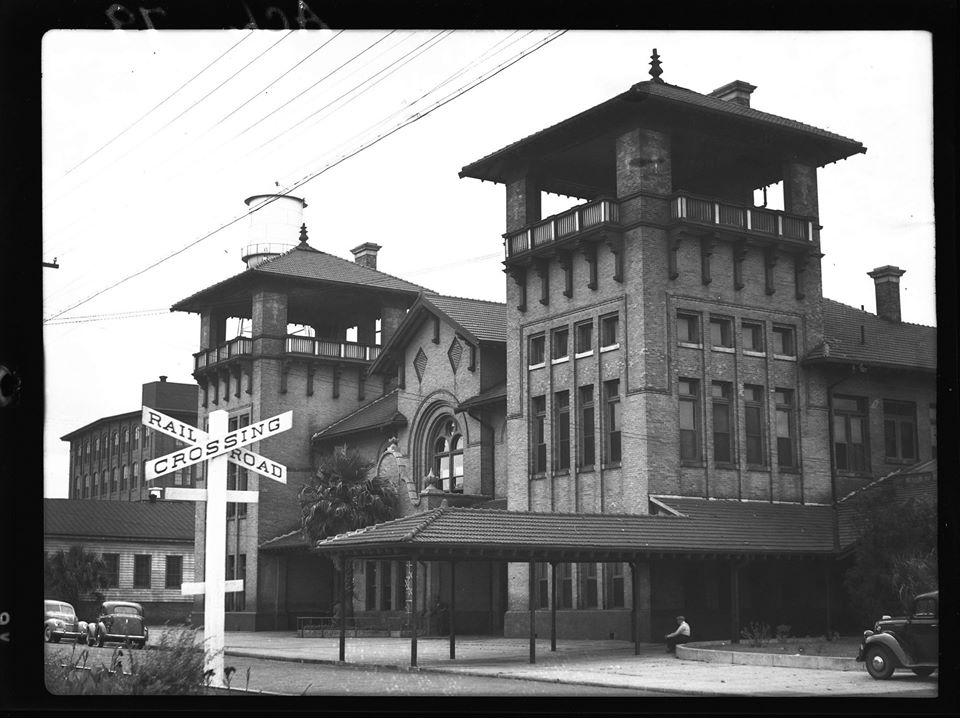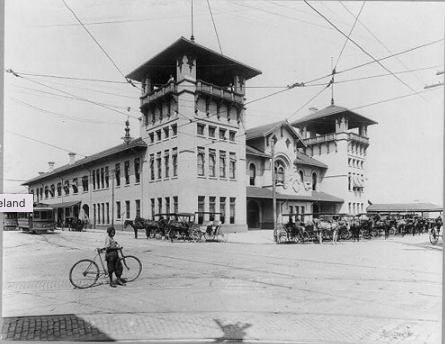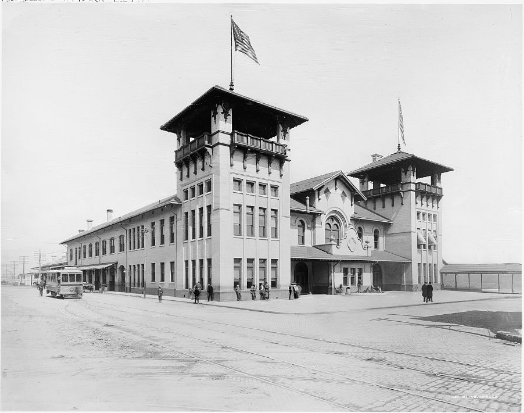UNION STATION
Union Pier continues making local headlines, as Charlestonians brace for the Holy City’s biggest redevelopment project perhaps since its colonial wall went up in 1704.
Though today its dismal asphalt and concrete landscape appears to be a sterile wasteland, this 70-acre strip of waterfront property has played a defining role throughout Charleston’s history, as it undoubtedly will continue to. That’s why it’s important for us to understand its history and therefore its potential.
Within this column we’ve discussed several aspects of that history already: Bennett’s Rice Mill, the Mosquito Fleet, Northeastern Railroad’s Wilmington Depot. Today let’s look back at one of its most magnificent edifices: Union Station.
When it opened in 1907 near the intersection of Columbus and East Bay streets, Union Station was heralded by the Evening Post as “a major step of progress … one of the most modern and convenient terminals in the Southeast.” It was designed by Southern Railways’ architect, Frank Milburn, known nationally not only for his distinctive stations, but also for other civic buildings such as the Gibbes Museum of Art, completion of the S.C. State House in Columbia, and courthouses throughout the South and Washington, DC.
Built of buff-colored brick in the Spanish Revival style with tiled floors and roof, its lower-level passenger station had a ticket office, baggage claims, mail room, newsstand, ladies parlors, gentlemen’s smoking rooms, and three loading platforms along its concourse. The second floor included a telegraph and other offices. The station’s most distinguishing features, however, were its giant twin towers.
Union Station was a center of Charleston’s transportation systems, not only providing rail support to the wharves, but also as a hub for the city’s electric trolleys which, along with its companion ferry, shuffled Charlestonians among Mt. Pleasant, Sullivan’s Island, and Isle of Palms. During peak summer season, it moved 7,000 travelers a day.
Outside of local pleasure trips, however, Union Station was an arrival and departure point for soldiers serving in both World Wars. Today members of the Facebook page Charleston History Before 1945 recall memories there, emotionally saying good-bye to loved ones or enthusiastically welcoming them back home. One member reminisced that as a seven-year-old in 1944, traveling with her mother and expectant sister-in-law to visit her brother in Baltimore, the train was so crowded with servicemen, passengers sat on suitcases in the aisles.
Over time, transportation evolved and Union Station began showing its age. Its once-modern amenities, designed for travelers in the first decades of the 20th century, were outdated. Some had already begun questioning the need for a new station before a Jan. 13, 1947, story in the Evening Post recorded that fate had “taken a hand in the problem of providing Charleston with the type of railway passenger facilities a community of this size and prospects is entitled to.”
No one knows exactly how the fire began Jan. 10, but eye-witness Lucille Jones told a reporter she saw exactly where it started - in an oil stove by the ground-floor newsstand that “just flared up.” After that, things happened fast.
Telegraph operator Freeman Bozeman, who worked on the second floor, said that within three minutes of hearing someone shout “Fire!,” the corridors were engulfed in black smoke and everyone dashed to the nearest exit. Obviously a dedicated employee, Bozeman recalled running with his telegraph machine to a second-floor window, where he finished the last sentence of a very important message before jumping to safety with only minor injuries.
A newspaper delivery man identified only as Mr. Chinners had just finished loading his van with Friday’s funny papers when he heard men and women screaming for him to back his van up to the building beneath them.
“I slammed it in reverse,” he told a reporter, “and waited beneath the shed while they jumped on top of the van…The minute they were all aboard I hauled away from there quick.” No one was seriously injured, the paper said, however the van’s roof suffered numerous dents. Chinners added that although he got all of Friday’s comics safely out of the station, prospects for Saturday’s funnies’ survival looked bleak.
Spectators quickly surrounded the scene, hampering firemen’s efforts to extinguish the five-alarm blaze. A reporter opined that the crowd seemed to be enjoying the spectacle, quoting an unidentified witness who said, “You don’t see this everyday. And we sure needed a new station.” Again, posters on the Charleston History Before 1945 page bring the historic moment to life as they remember witnessing the blaze first hand.
The newspaper account continues, saying that when the cold water of the fire hoses hit the hot bricks of the twin towers, the two began crumbling, then crashing, into the street. The crowds finally backed up. Miraculously, though numerous injuries and burns were reported, no deaths were.
The charred ruins of the building stood for another decade, and a new train station opened in North Charleston. The property on which Union Station had served such an important role during the first half of the 20th century was absorbed, along with the wharves and other industrial properties, into the city’s 1966 sale to the S.C. Ports Authority.
Now we await the next chapter in the site’s history.



Add Text Here...

